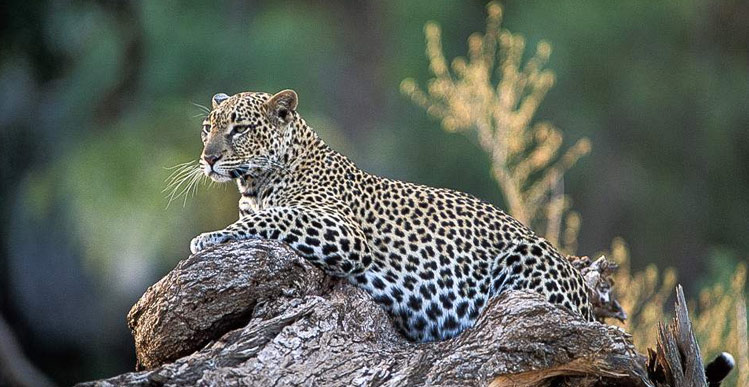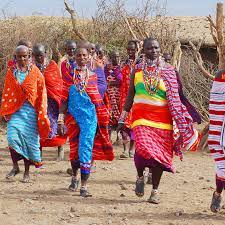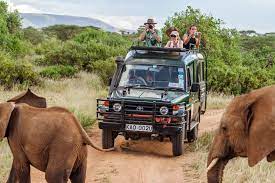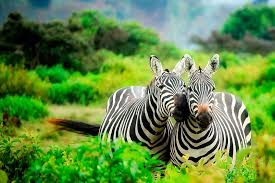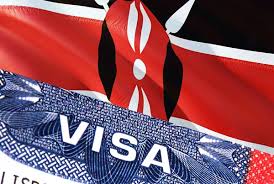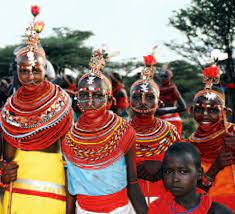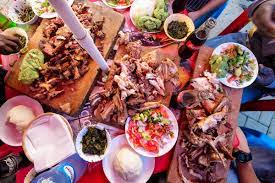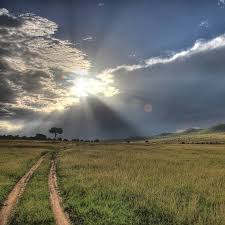Overview
Samburu National Reserve is situated at the southeastern corner of Samburu District in the Rift Valley Province of Kenya. It is bordered to the south by Ewaso Nyiro River, which separates it from the Buffalo Springs National Reserve. The reserve covers an area of 165 Km² and is located around 345Km from Nairobi. The Reserve lies within ecological zone V- which is classified as arid and semi- arid with moisture index of 42 to 57, which indicate that evapo-transpiration is greater than available moisture. The days are extremely hot while the nights are cool. The annual mean temperatures range between 18ºC and 30ºC, while the mean annual rainfall is 354mm with peaks in November and April. The dry season starts in late May, and goes up to early October during when large concentration of wildlife is found in the reserve due to availability of lush vegetation along the Ewaso Nyiro River, the main source of water to the Reserve and the nearby communities.
The reserve is reach in wildlife with fame for abundance in rare northern specialist species such as the Grevy Zebra, Somali Ostrich, Reticulated Giraffe, Gerenuk and the Beisa Oryx (Also referred as Samburu Special). The reserve is also popular with a minimum of 900 elephants. Large predators such as the Lion, Leopard and Cheetah are an important attraction (Kamunyak the Miracle Lioness that adapted the baby Oryx is a resident in the reserve). Wild dog sightings are also a common attraction to this unique protected area. Birdlife is abundant with over 450 species recorded. Birds of the arid northern bush country are augmented by a number of riverine forest species. Lesser Kestrel and the Taita Falcon are species of global conservation concern and they both utilize the reserve. Five species categorized as vulnerable have recorded in the reserve. These are African Darter, Great Egret, White-headed Vulture, Martial Eagle and the Yellow-billed Ox-pecker. Critically endangered species under CITIES – Pancake tortoise (malacochersus tornieri) is found in the reserve
Best Time to Visit
Samburu can be visited year-round, but wildlife watching is usually best in the dry months from June to October and December to March. It is wise to avoid the height of the Wet seasons (November, April and May). During these months, spotting wildlife (which has spread out anyway with the availability of water) in the long grass is more challenging.
Best Time
June to September and January to February are best for general wildlife viewing (Little to no rainfall)High Season
December to March and July to October (The reserve can get quite busy)
Low Season
April to June (Low season rates may apply)
Best Weather
June and December (It tends to be cooler and fresher after the rains)
November to May –Wet Season
April to June is low season and lower rates may apply Plenty of animals around despite wildlife viewing being better in the Dry season Best time for birders with the presence of migratory birds Road conditions can be bad in April and May Rain can cause havoc with your plans in the peak rainfall months, especially April How to get to samburu national reserve
Getting There
Samburu is generally a fly-in destination with a choice of several excellent lodges, from family-friendly lodges to remote honeymoon hideaways. Some also offer unique safari experiences like tracking big cat on foot, camel-back safaris and guided bush walks.
Activities
Bird Watching
Cultural Visits
Game Drives
Photography
Uniqueness
One of Kenya’s smallest, but richest, wildlife national parks
Home to the big cats; lion, leopard and cheetah
Healthy breeding packs of endangered African wild dog
Likely to see rare northern species, including “Samburu Special Six”
Birding hotspot with over 450 species recorded
Walking and mountain bike safaris
Visits to local Samburu tribal villages

